Last updated on May 17th, 2022
Our site is reader supported, this means we may earn a small commission from Amazon and other affiliates when you buy through links on our site.
Phlox is a stunning plant that produces billowy blooms and slender stature, something that is perfect for adding height to your garden, especially in the summer. Not only is the plant itself quite stunning and very easy to maintain but the flowers have an incredibly long flowering season that often starts as early as July and continues through until late September.
Available in a range of colours, including white, yellow, pink, red and even shades of blue that are next to impossible to find in any other plant. So if you are looking to grow Phlox in your garden, keep reading.
Types of Phlox
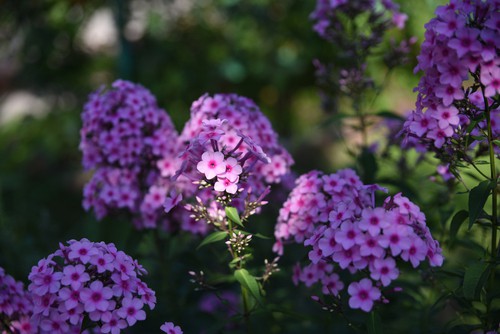
The first thing to be aware of is that you can get both traditional perennials types that grow upright (how you might think of most herbaceous perennials for cottage gardens), and one example of this variety is the Phlox paniculata.
You can also get smaller, ground spreading Phlox and these are often sold as rockery plants. They are great for planting and creating groundcover at a very low level, one example of this variety is the Phlox subulata, which is a creeping perennial.
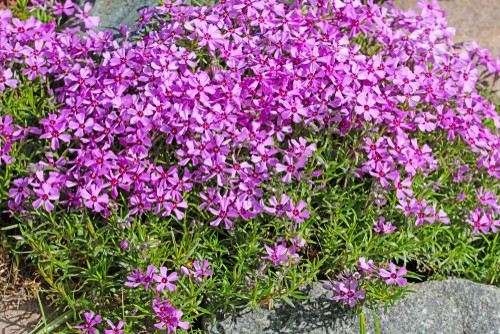
The Garden Phlox (sometimes called border Phlox or summer Phlox) is a native plant of Europe, originally cultivated in England and Germany before it was exported to the United States. Large upright varieties can reach up to one metre in size once fully established but most varieties will reach around 50cm.
Look out for varieties with a sweet fragrance and variegated foliage
Phlox is well known for producing dainty flowers with five petals packed together in dozens of panicles the size, which can range between 9cm and 15cm tall and 15cm to 20cm wide. The flowers are not only beautiful but often adorned with contrasting colours and a sweet fragrance. The foliage can be variegated as well as incorporating yellow margins or a creamy white centre.
Most Phlox flower between July and September
Most Phlox will flower between July and September. However, if you choose a variety that has been bred for longer flowering times they can start to flower a little bit earlier or a little later in the season.
Consider mixing early flowering varieties with the later flowering varieties
When you start to look for different Phlox to grow in your garden, you will find that they are categorised as early-season flowering, late to midseason flowering, and late-season flowering. If you plant all three of these together, you can enjoy flowers from the beginning of summer well into the end of autumn.
Growing Phlox
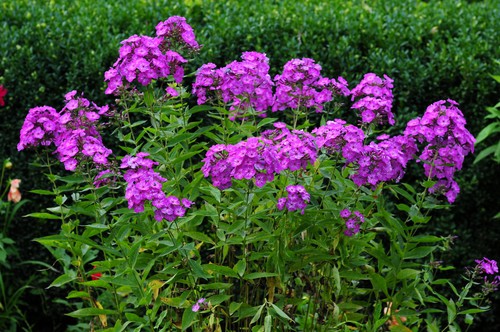
Phlox grow well in full sun but will also grow well with a little shade
Phlox will produce the best flowers if they are given full sunlight. However, Phlox are native woodland plants so they will tolerate a little bit of shade, especially if you live in the southern regions of the UK that are a bit warmer in climate.
Plant in fertile well-drained soil
The soil you grow them in needs to be fertile and well-drained, slightly alkaline, however, they will tolerate most soil types. If you have slightly acidic soil and you are set on growing Phlox in your garden, regularly applying lime to the soil can help make the pH level more suitable.
How to plant Phlox
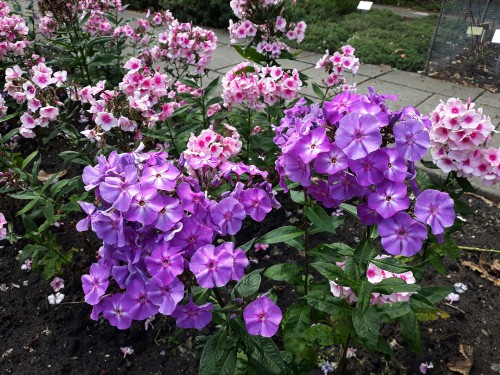
When you plant Phlox in your garden, you need to put them in the ground in the spring, after any danger of frost has passed. In the UK this is usually May. You can purchase them at any time of year as potted plants, although you can also get bare-root plants when they are dormant and they are often cheaper to buy in this way.
Spacing
Space any plants at least 20cm apart to ensure they have enough air circulation between multiple plants. This helps prevent mildew which can be a problem with Phlox.
After you put them in the ground, thoroughly water them and give them a layer of mulch around the base to keep the roots cool.
Growing from seed
If you choose to start them from seeds you will need to start them indoors at the end of winter and once they have germinated you can pot them on into smaller pots (and continue to do so) until they are fully established. You can move them outside in the spring when the risk of frost has passed.
Regular Care
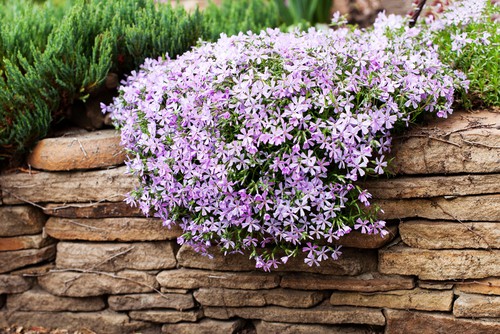
Watering
Make sure that you give them water during any dry spells, especially if you are growing them in pots and containers because they often dry out quickly. If you notice the foliage starting to wilt, you should give them more water but, at the same time, be careful not to overwater. It is always better to water at the base rather than on top of the plant.
Dividing Phlox
To prevent overcrowding you will need to divide your phlox every 3-4 years, as you do with most perennials. If you notice that they are not flowering as prolifically as they once were, or the centre of the plant dying out it’s indicative that is time to divide your Phlox.
Learn more about how and when to divide Phlox in this guide
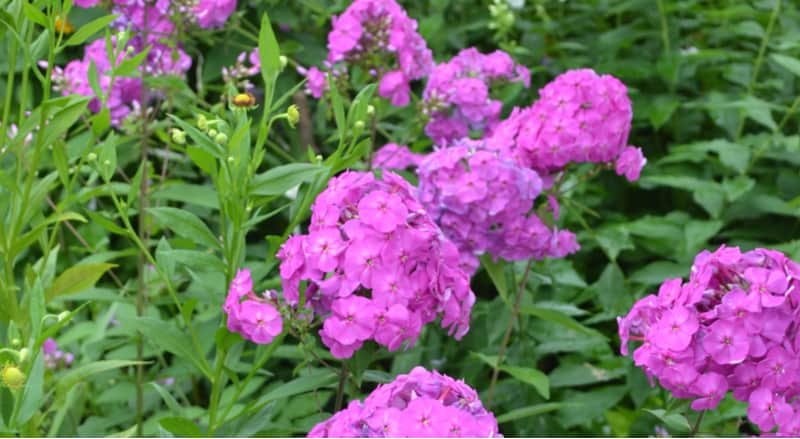
Cutting back plants to promote bushier plants
These plants don’t normally require pruning but you can force the plants to become bushier by pinching back the stems by a third at the beginning of summer. You can also deadhead the spent flowers to prevent them from reseeding and to extend the flowering period.
Cut back your stems to just above the soil line and then protect the roots by adding a layer of mulch before the ground freezes in very cold areas.
Dealing with powdery mildew fungus

Phlox can suffer heavily from powdery mildew, but it mostly affects the taller upright varieties and not the creeping varieties. This fungus will attack the leaves and the result will be shrivelled and grey leaves, the last thing you want in your garden.
This is very prevalent when the weather gets warmer and plants that are grown in partial shade are more susceptible. Improving the air circulation, and keeping the plants properly spaced when you first plant them in your garden will go a long way towards preventing this. You can also use mildew-resistant cultivars if your garden has suffered from this previously.
We recommend spraying them with a fungicide as soon as you see signs of mildew to try and help combat the mildew and prevent it from spreading. Tackling mildew is often an ongoing battle.

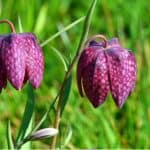

1 Comment
That was hugely helpful and enlightening – thank you 🙂